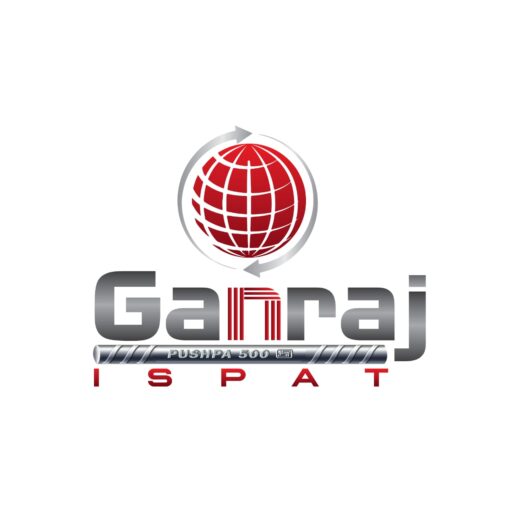
Introduction
In the world of construction, selecting the right materials is crucial for the success and longevity of any project. One of the most important materials in modern construction is the TMT Bar. These bars have become a standard choice due to their superior qualities, and understanding the advantages of using TMT Bars in construction projects can help you make informed decisions for your building needs.
What Are TMT Bars?
TMT Bars, or Thermo-Mechanically Treated bars, are a type of reinforcement bar that is extensively used in construction. These bars undergo a unique manufacturing process where they are rapidly cooled after being heated to high temperatures. This process gives them a tough outer layer and a soft inner core, providing the perfect balance of strength and flexibility, making them ideal for a variety of construction projects.
The Role of TMT Bars in Construction
TMT Bars play a vital role in the construction industry due to their exceptional strength and durability. Why are TMT Bars used in construction? They are primarily used to reinforce concrete, which by itself is strong in compression but weak in tension. By embedding TMT Bars within concrete, buildings can withstand various stresses and forces, making them safer and more resilient.
Advantages of Using TMT Bars in Construction Projects
Enhanced Strength and Durability
One of the primary advantages of using TMT Bars in construction projects is their enhanced strength. TMT Bars are known for their high tensile strength, which ensures that buildings can withstand heavy loads without breaking or bending. This makes them particularly useful in the construction of high-rise buildings, bridges, and other large structures where durability is essential.
Superior Flexibility and Ductility
Another key advantage of TMT Bars is their superior flexibility and ductility. These properties allow TMT Bars to absorb energy during an earthquake, reducing the likelihood of structural damage. In regions prone to seismic activity, this feature is especially important, as it contributes to the overall safety of the building.
Corrosion Resistance
TMT Bars are highly resistant to corrosion, which is a significant concern in construction. In environments that are humid or close to the sea, traditional steel bars can corrode over time, weakening the structure. However, TMT Bars are designed to resist rust and corrosion, ensuring the longevity of the building and reducing maintenance costs.
Thermal Resistance
TMT Bars also offer excellent thermal resistance, which is crucial in fire-resistant construction. These bars can withstand high temperatures without losing their strength, making them ideal for buildings that require additional fire safety measures. This property not only enhances the safety of the structure but also provides peace of mind to the occupants.
Cost-Effectiveness
While TMT Bars might have a higher initial cost compared to traditional steel bars, they are more cost-effective in the long run. Their durability and resistance to environmental factors mean that structures built with TMT Bars require less maintenance and have a longer lifespan. This results in significant savings over time, making them a smart investment for any construction project.
Ease of Use and Transportation
Another advantage of TMT Bars is their ease of use. They are lighter in weight compared to traditional steel bars, which makes them easier to transport and handle on construction sites. This not only speeds up the construction process but also reduces labor costs, making TMT Bars a practical choice for builders.
Types of TMT Bars Used in Building Construction
There are different types of TMT Bars available, each suited for specific construction needs. These include Fe-415, Fe-500, Fe-550, and Fe-600, with the numbers indicating the yield strength of the bars. Choosing the right type of TMT Bar depends on the requirements of your project, such as the load-bearing capacity and environmental conditions. It’s important to select the appropriate grade to ensure the safety and stability of your structure.
Environmental Impact of TMT Bars
TMT Bars are also an environmentally friendly choice in construction. The production process of TMT Bars is designed to minimize waste and reduce energy consumption. Additionally, their durability means that buildings require fewer repairs and less frequent replacements, which contributes to a reduction in overall material use and waste, making TMT Bars a sustainable option in the construction industry.
Case Studies and Real-Life Applications
Numerous construction projects have benefited from the use of TMT Bars. For instance, high-rise buildings in earthquake-prone areas have shown remarkable resilience due to the flexibility and strength of TMT Bars. Additionally, infrastructure projects like bridges and flyovers have experienced improved longevity and safety, thanks to the corrosion-resistant properties of these bars.
How to Choose the Right TMT Bars for Your Project?
Selecting the right TMT Bars for your construction project is crucial. When choosing, consider factors such as the grade of the bars, the reputation of the supplier, and the specific needs of your project. It’s also wise to consult with structural engineers or construction experts who can provide guidance on the best type of TMT Bars to use, ensuring that your project is both safe and cost-effective.
Conclusion
The advantages of using TMT Bars in construction projects are clear. They offer enhanced strength, flexibility, and resistance to both corrosion and high temperatures, making them a superior choice for any building project. By investing in TMT Bars, you ensure the durability and safety of your structure, ultimately saving on costs and maintenance in the long term. For more details contact us at: Plot No: A-3, Nagar-Pune Road, Supa Parner Industrial Area, Supa, Parner, Ahmednagar – 414003. +91 9766173352. sales@ganrajispat.com. Visit our website: www.pushpasteel.com

Recent Comments